
Olahjiwa Olahtubuh Olahhidup - Alam takambang jadi guru

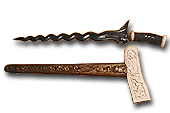
The History
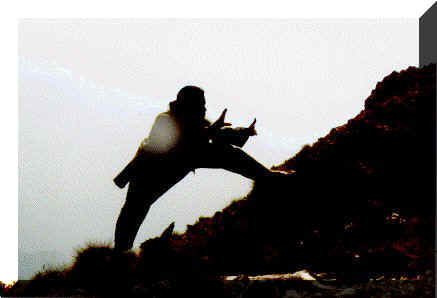 Originally Silek used simple forms imitating the movements of certain animals or
the way plants grow, adapted to human understanding of the art. In consequence
of cultural and regional differences hundreds of styles developed. Styles from
coastal regions differ vastly from styles from the mountains. During colonial
occupation Silek was forced underground and could only survive disguised as a
dance.
Originally Silek used simple forms imitating the movements of certain animals or
the way plants grow, adapted to human understanding of the art. In consequence
of cultural and regional differences hundreds of styles developed. Styles from
coastal regions differ vastly from styles from the mountains. During colonial
occupation Silek was forced underground and could only survive disguised as a
dance.
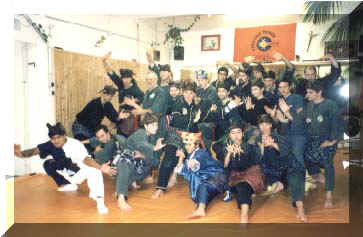 Each style of Silek is based on different aspects of training. The
characteristics for PM G=Sentak are slow elegant moves alternating with quick
snapping attacking techniques, developed from natural reflexes. Four principles
can be discerned in PM G=Sentak. Each of them describes one goal and emphasizes
one aspect without discriminating the others.
Each style of Silek is based on different aspects of training. The
characteristics for PM G=Sentak are slow elegant moves alternating with quick
snapping attacking techniques, developed from natural reflexes. Four principles
can be discerned in PM G=Sentak. Each of them describes one goal and emphasizes
one aspect without discriminating the others.
 Pandeka
Mihar comes from Western Sumatra, which is one of the three regions of origin of
Silek. From early childhood on, he was taught the martial arts and self defense
techniques of Eastern Asia. Since he was six years old, he received training in
the classic traditional Silek of his family. Until a few years ago, this style
has only been taught within the inner family circle. Like all men of the
Minangkabau he went abroad. After several years of exchanging experience with
masters of other styles, participation in Traditional Martial Arts competitions and
festivals and full time teaching, he founded his own institute named Pandeka
Mihar G=Sentak. His goal is to keep Silek in its traditional form as well as to
develop this martial art.
Pandeka
Mihar comes from Western Sumatra, which is one of the three regions of origin of
Silek. From early childhood on, he was taught the martial arts and self defense
techniques of Eastern Asia. Since he was six years old, he received training in
the classic traditional Silek of his family. Until a few years ago, this style
has only been taught within the inner family circle. Like all men of the
Minangkabau he went abroad. After several years of exchanging experience with
masters of other styles, participation in Traditional Martial Arts competitions and
festivals and full time teaching, he founded his own institute named Pandeka
Mihar G=Sentak. His goal is to keep Silek in its traditional form as well as to
develop this martial art.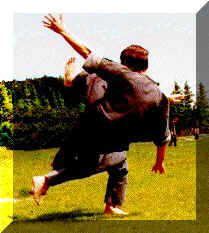 (Train the mind, train the body, develop your live, nature is
your teacher)
(Train the mind, train the body, develop your live, nature is
your teacher)
is a motto of his institute.
Art and sport are equally important in the school of PM G=Sentak. The education includes basic techniques like kicks and punches (pukulan, tumbuak), throws (lempar, tjampakan, bantingan), locks (kuncian, kabek), levers (tangkapan, tangkok) as well as dances (tari, bungo), weapons (senjata, sinjato), disarming (melutjuti senjata), take away (menggiring) etc. All of those are used in attack as well as in defense. Many of the forms derive from careful study of nature and have been refined over hundreds of years. As the student progresses in his study of PM G=Sentak he reaches the more traditional forms of this art. During this progression the entire body as well as the mind are trained with an emphasis on flexibility. Slow, gentle and harmonious movements serve for mobilizing the tenaga dalam
and help balancing out the energy of the opponent, as "Harmony in movement
causes harmony in spirit"
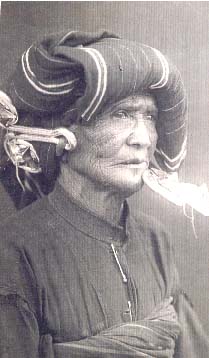
Most of the traditionally used weapons of Indonesia have their origin in ordinary tools. Use of firearms was prohibited by the colonial forces. Therefore inconspicuous tools, like sticks, sickles or fans were transformed into deadly weapons. Families had their own secret weapons (senjata rahasia), which were passed on together with poison recipes. Today most traditional weapons have lost their importance in self-defense and combat. They are only used in the martial arts and some of the martial dances. Others like the keris (flame knife, snake knife) are symbols of status and may only be carried by honored members of certain families. They are rumored to have magical properties.
Gerak Dasar (basic movements)
Garik / Tari / Bungo (motion/dance/flower of movement)
Sabung Berpasangan / Permainan (fighting techniques/play)
Sabung Bebas / Tjakak (free fighting/combat)
Tari Sewah / Main Pisau kuku alang (dance of the knife/play of the eagel´s
knife claw)
Senjata / Ladiang, Tongkat, Sabit, Kurambik, Kipeh, Deta, Saruang, dst.(Universal weapons of the minangkabau/pagaruyuang)
Bunyi-Bunyian/Aluang Bunian (musicform of the minangkabau/pagaruyuang)
As
a Westerner, of course, you are confronted with a lot of unknown aspects in this
training – with teaching methods, with rules and rituals from another cultural
background, and so your first step of learning might be: to open your mind. PMG=Sentak
is based on a very old and differenciated tradition of martial arts that were
developed on the islands of Indonesia. The different styles of Silek and Galuik
evolved in a close relation to nature and to the spiritual world. The movements
of animals and the shape and life of plants taught the people how to use their
body in the most effective and harmonious way, combined with the power of magic,
with human wisdom and with ethical discipline. All these elements are still
present in the martial art of PMG=Sentak and as a scholar you are offered the
possibility to participate in this rich tradition.
What
you are not offered is an exotic trip or a recipe how to become perfect. The
whole training is based on the idea that you only learn step by step, by serious
practice, by investing a lot of commitment, creativity, time and energy. Mastery
is not reduced to the idea of perfection, it means an ongoing process of
developing one´s human resources and spiritual potentials.
The
Sasaran where the training takes place is thought as the womb of a mother: Here
you go back to your sources, you unfold what was given to you. The scholars pay
respect to this room, to the teacher and to each other. When you enter the
Sasaran, you trie to leave outside the problems and moods of your everyday-life
and to concentrate fully on the actual moment. So each scholar is contributing
to an atmosphere of hightened attention and energy that supports the
learning-process. An important part of the training is the warming up and the
>tuning< of the body, often practised together with a partner, sometimes
in playful competitions, combined with breathing techniques, with singing,
shouting, dancing.
What
is characteristic for the style of PMG=Sentak – the alternating of slow,
harmonious movements with quick snapping and attacking techniques – this >rhythm<
is also typical for the atmosphere in the training. There is exercises and
challenges, where you go to your limits, you experience total exhaustion, thrill
or fear and there is also playful and joyful actions, moments of relaxing and
joking. The changing atmosphere and the altering tasks require a flexible
attitude, students learn to react quickly and adequate, to adapt themselves to
the actual situation and to the partner, and to be watchful and attentive. When
progressing in your training you begin to recognize that this flexibility is one
of the clues of PMG=Sentak: The art of fighting developes in the confrontation
and exchange with the opponent and with the surrounding, it is the ability to
react, to answer, to play, to adapt oneself and to surprise. In every moment you
should be aware of your movements and of your surroundings – only if you are
able to control your actions you are free to follow your intuition.
The
education is focussed on the alternating of offensive and defensive techniques,
in a series of choreographed fights the scholars repeat and refine the different
techniques, they learn to use them like a language. This means for example that
you redirect the attack of your opponent by using the energy of his kick or
punch, turning it around like in a dance; or if you are thrown, you can use the
touching with the ground as an impulse for an unexpected and swift action. In
PMG=Sentak you learn to fall without being hurt or demoralized, by controlling
your reactions and using your body in an effective and intelligent way.
All
these abilities and techniques are taught in a programm, that includes also
shadow fighting, fighting with weapons and education in the classical forms of
Silek. In the shadow fighting you learn to work with your imagination, to
balance and to aim your movements, to develop your individual expression in a
harmonious and aesthetic way. Training with changing partners allows you to
recognize and to extend your patterns of reactions and to deal with frustration
and agression, and also to discover new aspects and qualities in a repeated
course of movements.
There
is different graduations, each of them emphasizing a special trait and qualitiy
of the art of PMG=Sentak. Before you rise to the next graduation you have to
pass an exam: this is the moment to practise all what you have learned, to test
your strength, your inner power, your intuition and your perseverance. But it is
in every single training hour, that you have the chance to learn, to shift your
boundaries and to overcome timidity, irritability and indecision. PMG=Sentak is
not focussed on spectacular shows or the thrill of competitions, you work – by
the help of others – on your self. By experiencing Pandeka Mihar as a
sovereign teacher and masterly performer of PMG=Sentak you can get a sense of
the physical and spiritual potential, that lies in this martial art.
Since 1989 Pandeka Mihar teaches in his sasaran in Vienna, Austria (Europe).
The adress is:
PM G=Sentak Sasaran
Wurmsergasse 43/1-2
A-1150 Vienna, Austria
Home